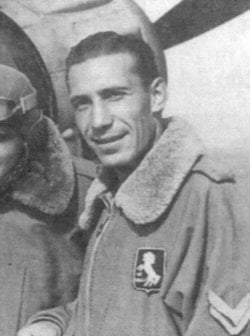In the summer of 1941, a new silhouette graced the skies over Malta—the Reggiane Re 2000. But its story was destined to be overshadowed by a more formidable successor, the Re 2001.
By Richard J. Caruana
A new shape appeared in the skies over Malta during July 1941 in the form of the Re 2000 which had arrived in Sicily with the 377ª Squadriglia on July 20 based at Trapani. Having proved unsuccessful in service, this type was soon replaced by a much more efficient version, the Re 2001. Reggiane’s technical director, Roberto G. Longhi, decided to develop the Re 2000 to take the liquid-cooled Daimler Benz DB601A. The prototype Re 2001 Falco II (MM.409) flew for the first time on 25 June 1940 piloted by Mario de Bernardi. Production at the Reggio Emilia plant consisted of one hundred Serie I machines built between November 1941 and September 1942, 39 of which were fighter-bombers carrying a 250 kg bomb on a special ventral rack, while two others were adapted for catapult launching and twelve were fitted with arrestor hooks to train pilots to operate from Italy’s two aircraft carriers then under construction (eventually never launched).
Between November 1942 and August 1943, a further 124 Re 2001s were produced, including 94 examples of the night fighter version designated Re 2001 CN. The Re 2001 had a maximum speed of 545km/h at 5.500m and had the advantage of possessing an extra pair of 7.7mm machine guns in the nose. The wing guns augmented the rate of fire, especially thanks to the 600 rounds per gun which could be carried in the wing ammunition bays. Another distinct advancement was its long range which at 1.040 km was one of the best at the time.
The Re 2001 entered service with the 2º Gruppo of the 6º Stormo (150ª,152ª and 358ª Squadriglia) at Gorizia during December 1941 where the units spent their period of training until the move to Roma-Ciampino early in the new year. The planned transfer to Sicily (Caltagirone) could only be effected in May 1942 from where initial escort duties with bombers attacking Malta began towards the end of that month. On 12 July, Ten. Col. Aldo Quarantotti, the 2º Gruppo commander, went out in search of one of the unit’s pilots who had failed to return only not to return himself. His post was taken over by Magg. Pierluigi Scarpetta.

The 2º Gruppo moved to Sardegna (Monserrato) in the summer from where they participated in the important air-sea battles of mid-August 1942, when Axis units were determined to deprive Malta of all convoys coming to its aid. On 12 August, 26 Re 2001 formed the escort force to the torpedo-bombing S 79s. The following day, 19 Re 2001s returned to Trapani-Chinisia in Sicily followed by another transfer later that day to Pantelleria from where they flew operationally on 14 August.
The 22º Gruppo (359ª,362ª and 369ª Squadriglia) received the Re 2001 CBs on 30 June 1942 at Ciampino, with the 362ª Squadriglia being transferred to Sardegna to participate in the mid-August anti-convoy operations. During September, the 22º Gruppo joined the 2º Gruppo in Sicily for a final desperate attempt against Malta during the autumn of that year. In November, the unit returned to Sardegna from where it flew a number of sorties against Algerian targets following Operation Torch, the Allied landings in North Africa.
With the beginning of Allied night incursions on Italian territory, as a prelude to the invasion of Sicily, the Re 2001 CN night fighters were organised into specialised units to counter this threat. The 160º Gruppo (375ª,393ª and 394ª Squadriglia) was based at Decimomannu (Sardegna) in March 1943, moving to Villafiorita the following month, with some of its Re 2001s being dispatched to Corsica. A similar unit was the 60º Gruppo (234ª and 235ª Squadriglia) entrusted with the defence of Lonate Pozzolo and Venice, while the 59º Gruppo (232ª and 233ª Squadriglia) was based at Metato and Latina between March and July 1943, moving to Venegono in August.
The 22º Gruppo, by then comprising also the 371ª Squadriglia, accompanied by the 150ª Squadriglia of the 2º Gruppo (152ª and 358ª Squadriglia) were based at Sarzana. One other Gruppo to be equipped with the Re 2001 for the night-fighter role was the 167ª (300ª and 303ª Squadriglia) entrusted with the defence of the Italian Capital.
At the time of Operation Husky (the invasion of Sicily), the number of Re 2001s on strength with the Regia Aeronautica had dwindled down to just over 70, with those serviceable failing to around 33 examples on 8 September 1943.




